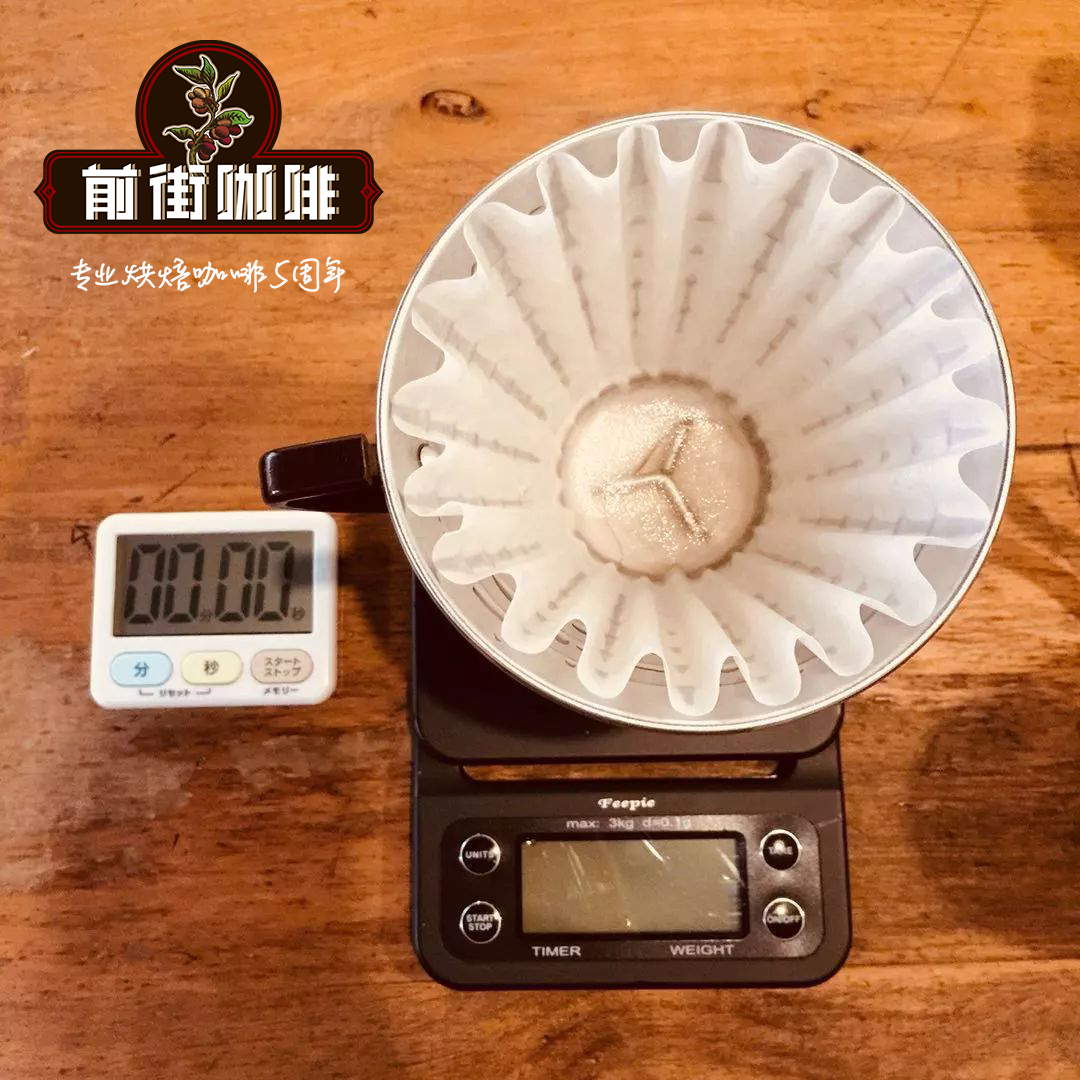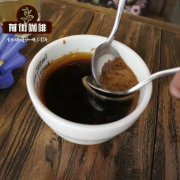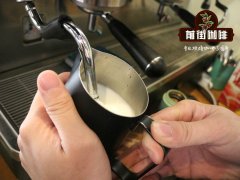Rwanda Ambarkanda Cooperative AA boutique coffee beans recommended _ how to roast Rwandan coffee beans

Professional coffee knowledge exchange more coffee bean information please follow the coffee workshop (Wechat official account cafe_style)
Recently, Rwanda, a coffee-producing country that has been frequently concerned by the boutique coffee industry because of its excellent quality, has not had a smooth development of the coffee cultivation industry. Rwanda once had an annual output of 45000 tons of raw beans, but the genocide that killed millions of people in 1994 almost destroyed the coffee industry in Rwanda, and coffee exports plummeted to nearly zero.
Fortunately, since 2000, the United States Agency for International Development (USAID) has assisted the development of local farmers' cooperatives, coupled with the excellent local conditions that the country already has-as if most of the land in the country is located on a plateau above 1400 meters above sea level; so that Rwanda will not only gradually restore production, but also many of them are good things! Because of the success of the cooperative movement, the existing production pattern in Rwanda is quite similar to that in Ethiopia, where regional cooperatives integrate a large number of small farmers to form the main force of coffee production, such as the Ambarkanda Cooperative and neighboring Musasa Co-op. Are good examples.
The Ambarkanda Cooperative, founded in 2005, is located about 30 kilometers northwest of the capital, Jijali, and now has about 2000 members and two washing plants. The cooperative is committed to leading farmers to produce high-quality berries with rich and complete contents in the way of organic cultivation, and soaking for 48 hours in the treatment plant is characterized by soaking for 48 hours more than twice the normal washing time, supplemented by scaffolding exposure to invest a lot of manpower to pick out bad beans that may be caused by soaking for a long time or other reasons.
Coupled with the introduction of fair trade model, improved the income of farmers and the infrastructure of the village, so that farmers can afford education and medical services. Various efforts have started a virtuous circle, making farmers more willing and able to invest in the production of high-quality coffee, and the quality of coffee has increased year after year-for three consecutive years in 2010, 2011 and 2012, the Ambarkanda Cooperative is on the COE list of Rwanda, which is the most indicative affirmation!
Rwanda (Rwanda) from Central Africa, bordered by Uganda to the north, Tanzania to the east, Burundi to the south and Zaire to the west (Republic of the Congo-Zaire), is an out-and-out standard landlocked country (see figure 1). All products must be agreed with neighboring countries to export or import to the sky or to the sea, or it is a dead end. Look at its neighboring countries are all big coffee-producing countries. For many years, the coffee beans of Rwanda are all shipped abroad through the ports from Uganda to Kenya. Therefore, in addition to doing a good job in diplomatic relations with these two countries, international organizations and the United States and the European Union have also helped a lot behind it. But the United States and the European Union are not so well-intentioned and do nothing. You should wonder why.
Rwanda, like many African countries, is ill-fated. Ethnic conflicts, civil wars and massacres have always been the causes of pain and backwardness in the hearts of the people of African countries. The most recent massacre of nearly one million civilians in just three months during the 1994 Rwanda ethnic civil war shocked the world, among which European and American countries and United Nations forces were also the biggest accomplices. Later, a real-life film "Hotel Rwanda (Hotel in Rwanda)" was reproduced in 2004, which made people feel deeply. Even today, there are still sporadic grenade attacks and small battles in Kigali, the capital of Rwanda, and the surrounding provinces, and the ethnic war continues.
The consequence of the ethnic civil war was to create a group of widows and orphans, so in the post-war recovery process assisted by international organizations, we have clearly found that more than 50% of the members of Rwanda coffee cooperatives, large and small, are illiterate women and widows, because men, young and old, were almost massacred in that incident.
Rwanda was a German colony in the early 20th century, and then it was held by Belgium at the end of World War I. in the early years, coffee was first introduced by German missionaries and began to grow coffee in 1904. Coffee production increased significantly around 1930. Rwanda was the ninth largest exporter of Arabica coffee in Africa, with nearly 450000 small farmers. The average planting area of each small farm was less than 1 hectare (about 165 coffee trees per coffee farmer). The total planting area was about 28000 hectares. Coffee production areas are mainly distributed in the western half of the country and the central region near the capital Kigali Kigali (see figure 2). But mainly low-quality and high-yield exports to Europe were used as cheap mixed beans with no economic benefit until the country's coffee industry was almost destroyed during the ethnic civil war in 1994, and only slowly recovered after the civil war with the help of relevant organizations and the government.
More than 95% of Rwandan coffee varieties are Arabica Bourbon (bourbon) and a small amount of Catuai (Kaduai) Caturra (Kaddura)
The planting height is 1200 meters above sea level and 1800 meters above sea level.
The flowering season starts from September to October.
From March to July in the next year of harvest.
Due to the relationship between climate and geographical environment and the new coffee bean treatment methods brought by the relevant coffee organizations to improve the quality, Rwanda has almost completely adopted the water washing method to deal with raw beans in recent years, so cooperatives and estates will share the water treatment plant to save money (see figure 3). Generally speaking, the water washing plant must be surrounded by coffee plantations.
In the annual competition of Top Coffee held by the American Fine Coffee Association SCAA in 2008, Rwanda Aromec's top waterwashed bourbon beans beat the Blue Mountains of Jamaica No.1 and Sumatra Mantenin G1 to win the 2008 COE (Cup of Excellence) Championship Award, which has expanded its fame and price in the coffee industry.
The Abakundakawa cooperative comes from the small village of Musasa and next to the Rushashi water treatment plant, about 30 kilometers northwest of the capital Kigali, and currently has about 1960 members and two washing plants (see points 12 and 17 in figure 3). Farmers grow high-quality coffee organically (but do not apply for or obtain any organic certification) and soak raw beans for 48 hours more than twice the normal washing time to increase the characteristics of bean fermentation. then use scaffolding exposure and a large number of manpower to pick out bad beans that may be caused by soaking for a long time or other reasons. At the same time, the COE (Cup of Excellence) list held by Abakundakawa in Rwanda for three consecutive years in 2010 (No. 3 in 2010) shows that the level of quality control is not poor, and the overall appearance of raw beans is quite similar to that of Kenyan beans (see figure 4).
Abakundakawa was founded in 2004. In fact, its official name should be Abakunda Kawa coffee cooperative. It is mainly composed of two women's associations, Hinga Kawa and Dakundakawa.
Generally speaking, Rwanda's beans are smooth, with acidity and floral aromas similar to those of Yegashev and Kenya AA, sweet citrus quality with lemon and orange blossom aromas and caramel, and characteristics similar to those of East African beans in Zimbabwe and Kenya.
As for the flavor of Abakundakawa-- a group buying online said that drupe / micro-flower aroma with a bit of cocoa multi-layered aroma, melon sweet, good finish, good body and sour quality, great change from hot to cold, faint red wine aroma when cool, and excellent complexity-I think this is a matter of opinion, and it is difficult to say for sure that everyone feels different.
It is recommended that the roasting range of this Rwandan coffee bean should be from American 1 explosion (City) to 2 explosion (Full City).
Two samples of baking degree were baked this time.
The first is the guest designated 1 explosion to turn low heat to 1 explosion after the end of the 20sec (205 ℃) under the beans, to be honest, the bean color is very light and the acidity of the fruit is really strong.
The second is another guest who likes coffee with slightly sour fruit, but does not indicate the baking degree, so the beans are delivered with 1 burst + 65sec (211 ℃). After tasting it, it is found that the overall tonality and taste are very close to the Kenyan Mchana AA Top.
Similarly, people who do not like sour fruit taste are advised to choose a baking degree close to 2 explosion or just Touch 2 explosion would be more appropriate.
END
Important Notice :
前街咖啡 FrontStreet Coffee has moved to new addredd:
FrontStreet Coffee Address: 315,Donghua East Road,GuangZhou
Tel:020 38364473
- Prev

Introduction of Ngamba coffee beans in Rwanda _ characteristics of coffee processing plant in Mushonyi micro-production area
Professional coffee knowledge exchange more coffee bean information please follow Coffee Workshop (Wechat official account cafe_style) Rwanda can be said to be a rapidly developing boutique coffee producing country in East Africa recently. In addition to the memory of the sad story of its Rwanda massacre, the quality of its boutique coffee has also improved very fast. We have tested several cups of fresh texture this year.
- Next

Kinini Rwanda Coffee Story_Rwanda New Start Program Coffee Bean Roasting and Brewing
Kinini, a company founded by Rwandan women, was founded in 2008 as part of a NEW begining project. The New Start Project was set up to house orphans and widows displaced by the 1994 genocide.
Related
- Detailed explanation of Jadeite planting Land in Panamanian Jadeite Manor introduction to the grading system of Jadeite competitive bidding, Red bid, Green bid and Rose Summer
- Story of Coffee planting in Brenka region of Costa Rica Stonehenge Manor anaerobic heavy honey treatment of flavor mouth
- What's on the barrel of Blue Mountain Coffee beans?
- Can American coffee also pull flowers? How to use hot American style to pull out a good-looking pattern?
- Can you make a cold extract with coffee beans? What is the right proportion for cold-extracted coffee formula?
- Indonesian PWN Gold Mandrine Coffee Origin Features Flavor How to Chong? Mandolin coffee is American.
- A brief introduction to the flavor characteristics of Brazilian yellow bourbon coffee beans
- What is the effect of different water quality on the flavor of cold-extracted coffee? What kind of water is best for brewing coffee?
- Why do you think of Rose Summer whenever you mention Panamanian coffee?
- Introduction to the characteristics of authentic blue mountain coffee bean producing areas? What is the CIB Coffee Authority in Jamaica?

